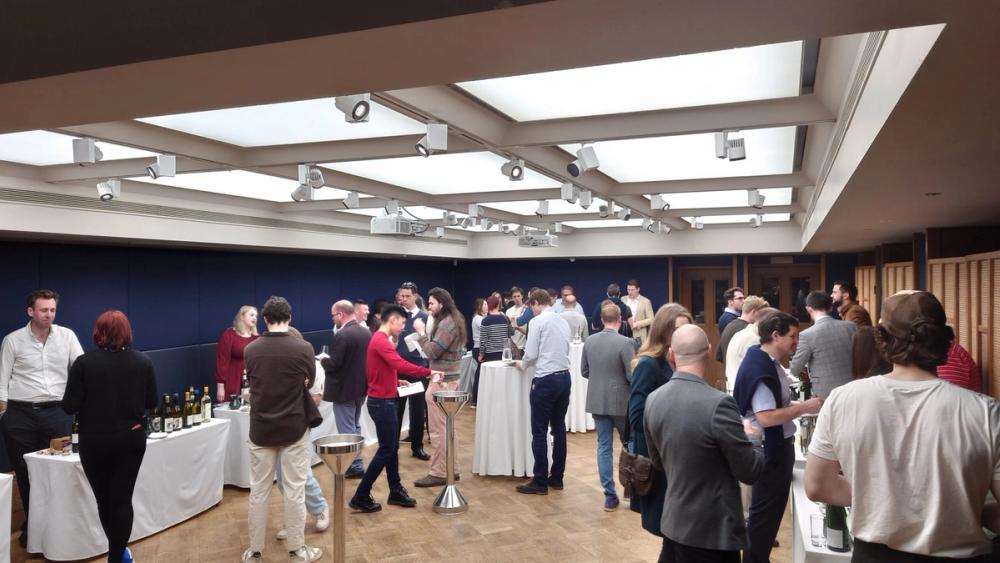Wanderlust Wine was founded by former financier, Richard Ellison, in 2015 in a bid to find sustainable wines made by independent wine producers around the world that all have a ‘wanderlust’ to push the boundaries and bring new styles to the market.
As a wine buyer there are many reasons for taking the time out of jammed packed calendars to go to a trade portfolio tasting. The two most important one are: to preview new vintages; and to taste new wines from a particular importer’s range of wines before deciding which ones you might list.
Which is what makes Wanderlust Wine so interesting. Its founder, Richard Ellison, is always looking to expand its portfolio so there is always quite an array of new additions to look forward to taste, be it from the Azores, Ibiza, or a new area of California, a region that it is very close to Ellison’s heart.

The recent Wanderlust Wine tasting in London was a great opportunity to taste through the importers range but also pick out which new wines might be worth listing says Mattia Scarpazza
The most important thing a trade tasting needs to get right in order to help visitors navigate the wines on show is the tasting booklet which should have, at the very least, this information in it: table numbers for each wine; details on each of the wineries on show; and a list of all the wines with their cost prices.
If a walk around tasting did not have this basic, crucial information available it would make the whole exercise pretty pointless. Any other information is additional and nice to have but not essential.
Timing and planning
Before starting the tasting I will look to identify which wines are a must taste and make sure they are marked off. It is very easy to get distracted once you start moving around the room and you do not want to lose focus on what you are there to do. Find wines that you can list in your restaurant.
It’s why it is also important a tasting gives buyers and sommeliers the chance to spend the time at each of the tables so they are able to ask questions of the producers, or sales representatives when they are at that table. It is not every day that you have direct contact with the owners, the producers and winemakers who can give you immediate answers to all your questions.
I will also make time to try any new wines in an importer’s portfolio. If you trust the supplier’s buying skills then a portfolio tasting is the perfect place to find new wines in the market wines and to be among the first to list them in your restaurant. An easy selling point for the sommelier team.
Wanderlust highlights

Richard Ellison has focused Wanderlust Wine on finding interesting independent, quality, sustainable producers from both traditional and non traditional winemaking parts of the world
Turning my attention to the Wanderlust tasting and it was great to see a good mix of new wines that fitted well into what is already an electic portfolio of smaller regions and newcomer wineries from the more established parts of the world.
Richard Ellison has focused the Wanderlust brand on finding good priced wines with compelling quality and history, with most of the wines at the tasting sitting in the £10 to £20 price bracket. He backs this up with quick customer service, automated warehouse shipping and a low minimum order which has allowed him to focus his client base on mostly specialists wine merchants and high end restaurants.
If you are on the lookout for wines from California, New York State, the European islands and Hungary then Wanderlust has curated these regions very carefully. Recently adding the late Jim Clendenen Californian estate wines to the range to support the already small scale producers from all corners of California he has in the Wanderlust range.
My favourite wines from the Wanderlust tasting:

Isabelle Clenenden was at the Wanderlust Wine to show buyers the family wines that Wanderlust is importing in the UK
Clendenen Family Vineyards, Friulano and Nebbiolo Bricco Buon Natale. An early 2000s project from the famed late Jim Clendenen of Au Bon Climat this line focused on non Chardonnay and Pinot Wines (although there are three in the line up) but instead of other European varieties the Nebbiolo is vibrant with a crunchy palate and quite refreshing coming from California.

Panoramico,White Rioja, Tierroya. A white Rioja that shows the power of the style with an uplift of fruit character. This is a project that has looked to revive vineyards in the Rioja Alta region and stop them from being uprooted. It is made in a limited number of bottles.
Tickerage, Classic Cuvee, 2013 and Blanc de Blanc 2011. From a small production winery in Sussex run by a former Plumpton graduate. The key to this wine is the savouriness of the style thanks to long maturation on the lees for eight and 10 years respectively.
Chateau des Sarrins, Rouge Grand Cuvee. The second estate of Champagne Bruno Paillard in the Côtes du Provence, selection of old vines GSM and Cabernet Sauvignon.
Brimoncourt, Champagne Blanc de Blanc and Vintage 2009.From a revived brand bought in 2008 the winery focuses on Chardonnay from the Premier Cru and Grand Cru of Avise and Chouilly Premier Crus.

Mariedam, White Zinfandel, Sabelli-Frisch, California. The latest addition to the California portfolio is a technical, very pale rosé made from white Zinfandel which comes from an own-rooted vineyard planted in the 1930’s. It has savoury aromas, rich in the palate and uplifted in freshness.
Fattoria Corzano E Paterno, II Corzanello Rosso. From San Casciano Val di Pesa north of Florence on the outskirt of the Chianti Classico Region. It is a vibrant Sangiovese, Cabenet Sauvignon blend.
- You can find out more about Wanderlust Wine at its website here.









































